Valladolid, Castilla y León 作者: 来源: 发布时间:2021-03-15
1. Population and Area
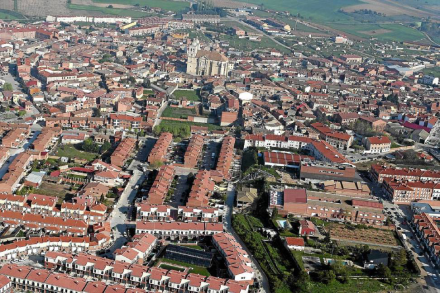
Pop: 298,866 (city) | Area: 197,9 km2 (prov.) | Elev: 698 masl
Valladolid location in Spain within the community of Castilla y León
https://goo.gl/maps/1unqsxhgi7o65BsF9
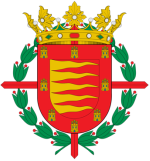
2. Natural geography
Nature and weather
Valladolid is located at roughly 735 metres above sea level, at the centre of the Meseta Norte, the plateau drained by the Douro river basin covering a major part of the Northwest of the Iberian Peninsula. The primitive urban core was built ex novo in the 11th century on a small elevation near the confluence of the Esgueva with the Pisuerga, on the left-bank of the later river. The city of Valladolid currently lies on both banks of the Pisuerga, a major right-bank tributary of the Douro.
Flora and fauna
Amphibians: common spotted toad, Iberian midwife toad.
Birds: falco columbarius, common accent, western marsh harrier, stone curlew, jay, scops owl, rockfish, common avocet, great bustard, tree pipit, griffon vulture, vulture, buzzard (common buzzard), common kestrel, redstart, mirlona warbler, mountain bunting, common smoker or black tern, barnacle grouse, gray heron, common hawk, laughing gull, daurian swallow, tree sparrow, gray wagtail, black kite, European fly bird, house pigeon, cow pigeon, red partridge, crossbill common, great crested grebe, nuthatch, wild bush, pale wattle, charlo thrush.
Vascular flora: nepeta hispanica
Invertebrates: jydrochus smaragdineus, Ochthebius nanus, agabus nebulosus, berosus affinis, coelostoma orbiculare, dytiscus circumflexus, enochrus bicolor, haliplus lineatocollis, helophorus seidlitzii, hydroglyphus geminus, berosus affinis, coelostoma orbiculare, hydropicus bicolor.
Mammals: common squirrel, black-faced dormouse, light-edged bat, large horseshoe bat, gray-eared bat, large buzzard bat, gray shrew, common noctule (species of bat), European otter, common rat, water rat, house mouse, field mouse, wild vole, Lusitanian vole, Mediterranean vole, fox.
Continental fish: parachondrostoma miegii, common barbel, vermilion, bordallo or escalo or Galician, colmilleja, Iberian goby
Reptiles: bastard snake, long-tailed lizard, common gecko, snout viper.
Köppen Classification: Mediterran Climate
Under the Köppen Climate Classification climate classification, "dry-summer subtropical" climates are often referred to as "Mediterranean". This climate zone has an an average temperature above 10°C (50°F) in their warmest months, and an average in the coldest between 18 to -3°C (64 to 27°F). Summers tend to be dry with less than one-third that of the wettest winter month, and with less than 30mm (1.18 in) of precipitation in a summer month. SMany of the regions with Mediterranean climates have relatively mild winters and very warm summers.
The Köppen Climate Classification subtype for this climate is "Csb". (Mediterran Climate).
The average temperature for the year in Valladolid is 52.0°F (11.1°C). The warmest month, on average, is July with an average temperature of 68.2°F (20.1°C). The coolest month on average is January, with an average temperature of 37.6°F (3.1°C).
The highest recorded temperature in Valladolid is 103.0°F (39.4°C), which was recorded in June. The lowest recorded temperature in Valladolid is 9.0°F (-12.8°C), which was recorded in January.
The average amount of precipitation for the year in Valladolid is 16.4" (416.6 mm). The month with the most precipitation on average is November with 1.9" (48.3 mm) of precipitation. The month with the least precipitation on average is August with an average of 0.4" (10.2 mm). There are an average of 71.0 days of precipitation, with the most precipitation occurring in May with 9.0 days and the least precipitation occurring in July with 3.0 days.
In terms of liquid precipitation, there are an average of 51.1 days of rain, with the most rain occurring in May with 5.5 days of rain, and the least rain occurring in August with 1.0 days of rain.
http://www.weatherbase.com/weather/weather-summary.php3?s=4180&cityname=Valladolid%2C+Castille+and+Leon%2C+Spain&units=
Getting there and around
By plane – Villanubla (VLL), the Valladolid airport, is 15 minutes from the city center. There's a daily bus shuttle to the city at 5:15AM, 4:15PM and 7:20PM. The timetable changes at weekends and holidays.
By car – The distance between Madrid and Valladolid is 162 km. The road distance is 211.2 km. It takes approximately 17h 50m to drive from Mexico City to Valladolid.
By bus – There is a direct bus departing from Madrid Moncloa and arriving at Valladolid. Services depart every three hours and operate every day. The journey takes approximately 2h 15m, and costs 15€ - 22€.
By train – The quickest way to get from Madrid to Valladolid is to train which costs 15€ - 19€ and takes 1h 51m. There is a direct train departing from Madrid-Puerta De Atocha and arriving at Valladolid. Services depart twice daily and operate every day.
Rideshare – The cheapest way to get from Madrid to Valladolid is to rideshare which costs 10€ and takes 2h 43m.
https://www.rome2rio.com/map/Madrid/Valladolid
Rideshare – Check out Blabla Car's carpooling service for rideshare options between Madrid and the city you are visiting. A great option if you don't have a driver's license or want to avoid public transport.
COVID19 – International entry into Spain: partially open
Non-essential travel is open with certain safety requirements. 1.5m social distancing and use of masks are mandatory within Spain.
Some COVID-19 travel conditions may apply in Spain and transport services are subject to change.
Get around
Residents of Valladolid are mostly monolingual in standard Spanish. There is a popular myth that the the "purest" Spanish is spoken here, and it is thought that the Royal Spanish Academy (the group that sets the linguistic standards and produces dictionaries) originally based the written standard on the speech of Valladolid. There is little real evidence for this, but it is generally true that Valladolid residents speak more clearly and annunciate their words more than people from other regions of Spain. This is good news for non-native Spanish speakers or people looking for a good place to learn Spanish.
Local Buses – Local buses are available locally for a fraction of the cost of a taxi around town. You need to speak Spanish to be able to ask for directions or ask the driver to tell you where to get off.
Uber is expanding rapidly across Spain and now offers services in cities across the country. Uber has almost every Spanish city in its network every year, check for availability when you arrive at your destination.
Beat, Cabify and Didi are also developing and currently operate in cities including Madrid, Barcelona, Valencia, Valladolid, Murcia, and Bilbao. Check for availability in the city you are visiting.
These services offer people with smartphones a way to book a cab through a mobile app for a pre-agreed price. Fares are comparable with Sitio type cabs, and sometimes trade at a premium to this when local demand increases.
3. GDP
GDP: 13,000 M EUR (2010)
4. Industry characteristics
Valladolid is a major economic center in Spain. The automotive industry is one of the major motors of the city's economy since the founding of FASA-Renault in 1953 for the assembling of Renault-branded vehicles, which would later become Renault España. Four years later, in 1957, Sava was founded and started producing commercial vehicles. Sava would later be absorbed by Pegaso and since 1990 by the Italian truck manufacturer Iveco. Together with the French tire manufacturer Michelin, Renault and Iveco form the most important industrial companies of the city.
Besides the automotive and automotive auxiliary industries, other important industrial sectors are food processing (with local companies like Acor and Queserías Entrepinares and facilities of multinationals like Cadbury, Lactalis or Lesaffre), metallurgy (Lingotes Especiales, Saeta die Casting...), chemical and printing. In total 22 013 people were employed in 2007 in industrial workplaces, representing 14.0% of total workers.
The main economic sector of Valladolid in terms of employment is however the service sector, which employs 111,988 people, representing 74.2% of Valladolid workers affiliated to Social Security.
The construction sector employed 15,493 people in 2007, representing 10.3% of total workers.
Finally, agriculture is a tiny sector in the city which only employs 2,355 people (1.5% of the total). The predominant crops are wheat, barley and sugar beet.
Top 10 companies by turnover in 2013 in € million were : Renault (4 596), Michelin (2 670), IVECO (1 600), the Valladolid-based supermarket chain Grupo El Árbol (849), cheese processing Queserías Entrepinares (204), sugar processing Acor (201), service group Grupo Norte (174), automobile auxiliary company Faurecia-Asientos de Castilla y León (143), Sada (129) and Hipereco (108).
Key project:
The REMOURBAN sustainable urban regeneration project ends after five years of development
This pioneering initiative in Europe has improved the quality of life of Valladolid people through innovation and sustainability.
The Valladolid City Council participated in this project, co-financed with European funds and a milestone for the consolidation of the city in urban mobility and energy efficiency.
Remourban has undoubtedly been a before and after in the sustainable development of Valladolid in several areas: energy efficiency. Sustainable mobility and use of ICT. From the challenge and complex mission of rehabilitating a neighborhood to the implementation and improvement of electric urban mobility, through the design of ICT platforms to collect specific data on these actions, Valladolid arrives at this final Conference with the objectives achieved.
The comprehensive transformation of the FASA district has meant that more than 400 homes have benefited from thermal insulation on the facades and roofs, the installation of solar panels to produce electricity and reduce consumption, a biomass boiler and the renewal of the network of distribution of heating and sanitary hot water. All this has made it possible to optimize consumption, control temperature and energy consumption, control temperature and energy consumption, with conclusive results such as a reduction in energy consumption of 30%, 70% of the energy is renewable and the bill for the Neighbors is down 64%.
Actions in urban mobility, both in the public and private spheres, have also been a challenge in different areas.
On the one hand, the first 5 hybrid buses with extended autonomy (2 of them with community financing), which began to circulate in the summer of 2016, allow a movement through the center of zero emissions in fully electric mode.
A year later, the Agreement between the City Council and Iberdrola launched a completely renovated Recharge Point Network (RPR) for public use with a total of 86 points.
In addition, this sustainable urban ecosystem took a further step, with two calls for incentives for companies and freelancers that expanded the commercial delivery fleets and taxis in 45 electric vehicles, with the installation of equipment that has reported information to continue managing more efficiently the commuting in the city. The installation of 22 recharging points in strategic logistics points or large distribution areas completed the call. Finally, the carsharing of municipal vehicles has completed this strategy within the European project.
Technology has been put at the service of the project. The ICT platform has incorporated the monitoring and control of the thermal system of FASA's rehabilitated houses as well as that of urban transport, the electric charging processes, the impact on the network, the state of the batteries, the use of the vehicle ... Information added and integrated into the city's platform.
The citizen engagement strategy has done the rest by ensuring citizens are informed and motivated, the basis of the final Remourban lighthouse city training certificate.
https://www.valladolid.es/es/actualidad/noticias/proyecto-regeneracion-urbana-sostenible-remourban-finaliza
5. Attractions
National Sculpture Museum – Museo Nacional de Escultura
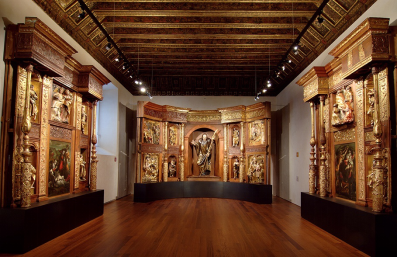
Among the top sights of Valladolid we must list the National Sculpture Museum, located in the beautiful San Gregorio College. In this vast museum you will find a wonderful collection of Spanish sculpture, polychromatic wooden sculptures, statues, altarpieces, and even Gothic Pietá from the 16th century.
This Museum is a century-old institution that preserves and disseminates the most original, representative and extensive collection of Spanish sculpture. It is distinguished by a rich heritage set - the religious art sculptures from the 13th to 18th centuries -, to which the collection of copies from the extinct National Museum of Art Reproductions has been added since 2011.
The Museum is an open place, accessible to all of society, which wishes to provide the user with a stimulating, welcoming and different experience. At the same time, he is also committed to preserving his memory and making visible an intense personality that lies in his core collection of sculpture, in the harmony between artistic content and architectural container, in its unique history and in the modern and dynamic approach of its works. programs.
http://www.culturaydeporte.gob.es/mnescultura/conocenos/elmuseo.html
Campo Grande Park
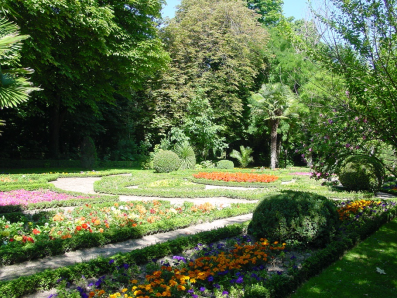
Right in the city centre lies its most emblematic park in terms of both history and its beauty as a garden. Three of the city’s most important avenues border the Campo Grande Park: Acera de Recoletos, Paseo de los Filipinos and Paseo de Zorrilla. The park is surrounded by a fence and has entrance ways on all its sides. Its origin dates back to 1787 when it was first named the Field of Truth, then the Field of Mars and later the Field of the Fair, as herds of animals were kept here next to the entrance to the city. The park occupies a surface area of 115,000 m2 and combines in a unique way its plant life with artistic, aquatic, children’s playground and environmentally friendly features.
El Campo Grande is the most famous park of Valladolid, come here for a rest or for a walk and enjoy the shade of nearly 100 different species of trees.
https://www.info.valladolid.es/en/-/campo-gran-1?inheritRedirect=true&redirect=%2Fweb%2Finfo%2Flos-10-imprescindibles
https://www.visitmexico.com/en/yucatan/valladolid/ek-balam
The house of Cervantes – Casa de Cervantes
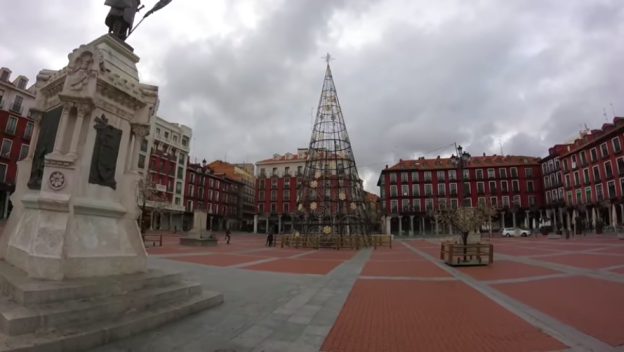
The Museum sits on the set of four houses built on the old Rastro de los Carneros street, by the architect Juan de las Navas in 1601.
Miguel de Cervantes rented one of those houses upon his arrival in Valladolid, specifically number 9.
It was not until 1948 when the Museum as we know it today was founded. Since 1916 a library was installed on the lower floor and some rooms of the house where Cervantes lived could be visited.
The house consists of 6 rooms, through which the public can learn about the lifestyle, decoration and customs of the time in which the writer lived in the city of Valladolid, its historical, socio-economic and political context.
This is the house where Cervantes lived between 1604 and 1606, at this time his master piece don Quijote de la Mancha was published, and the presence of the windmill-chasing knight is nearly tangible here. The building dates from the late 16th century and was built by Juan de las Navas. A serene historical space remains at the house where Cervantes first imagined don Quijote. Cervantes' vast library and his rooms are still preserved and can be visited in the house.
http://www.culturaydeporte.gob.es/museocasacervantes/museo.html
http://www.tourspain.org/valladolid/whattodo.asp
A Tour of Beautiful and Historic Valladolid, Spain
https://youtu.be/JJwelga8Wiw
6. History
Precedents
The Vaccaei were a Celtic tribe, the first people with stable presence on the sector of the middle valley of the River Duero documented in historical times.
Remains of Celtiberian and of a Roman camp have been excavated near the city. The nucleus of the city was originally located in the area of the current San Miguel y el Rosarillo square and was surrounded by a palisade. Archaeological proofs of the existence of three ancient lines of walls have been found.
During the time of Muslim rule in Spain, the Christian kings moved the population of this region north into more easily defended areas and deliberately created a no man's land as a buffer zone against further Moorish conquests. The area was captured from the Moors in the 10th century.
Repopulation and growth
Historicist early 20th century mural painting by Eugenio Oliva depicting a meeting of Ansúrez, Eylo and other people in Valladolid
In 1072 Alfonso VI of León and Castile gifted the Lordship of Valladolid to Count Pedro Ansúrez. Entrusted with the repopulation of the area, Ansúrez led the foundation of the city along his wife Eylo Alfónsez. By 1084 the project for the foundation of the city was already underway. Ansúrez built a palace (now lost) and La Antigua church. Eylo founded three hospitals and the Churches of San Sebastián and San Nicolás. Both co-founded the church of Santa María. Valladolid was repopulated by people from the lands of Carrión and Saldaña.
In the 12th and 13th centuries, Valladolid grew rapidly, favoured by the commercial privileges granted by the kings Alfonso VIII and Alfonso X.
Early Modern period
In 1469, Queen Isabella I of Castile and King Ferdinand of Aragon were married in the city; by the 15th century Valladolid was the residence of the kings of Castile.[citation needed] In 1506, Christopher Columbus died in Valladolid "still convinced that he had reached the Indies" in a house that is now a museum dedicated to him.
From 1554 to 1559, Joanna of Austria, sister of Philip II, served as regent, establishing herself in Valladolid, with the latter becoming the political center of the Hispanic Monarchy by that time. She favoured the Ebolist Party, one of the two leading factions of the Court of Philip II, in competition with the albistas. The Reformation took some hold in the city appearing some Protestant circles presumably around the leading figure of Augustino de Cazalla, an adviser of Joanna. Ensuing autos de fe against the Protestant sects took place in 1559 in Valladolid.
A catastrophic fire in 1561 destroyed a portion of the city.
During a period of 1550-1551 the town hold the first moral debate in European history to discuss the rights and treatment of the indigenous people by conquerors.
Valladolid was granted the status of city in 1596, also becoming a bishopric seat.
In the midst of the reign of by Philip III, Valladolid briefly served as the capital of the Hispanic Monarchy between 1601 and 1606 under the auspice of the Duke of Lerma, valido of Philip III. Lerma and his network had bought plots in Valladolid before in order to sell those to the Crown. Promoted by Lerma, the decision on moving the capital from Madrid to Valladolid has been portrayed as case of a (double) real estate speculative scheme, as Lerma had proceeded to buy housing in Madrid once the capital was moved from the city as the prices had plummeted. After a plague epidemics in Valladolid, Lerma suggested the King to go back to Madrid, earning a hefty profit when the Royal Court went back to Madrid and the prizes went up again accordingly.
The city was again damaged by a flood of the rivers Pisuerga and Esgueva.
Contemporary history
From 1950 onwards Valladolid became an important industrial centre. This was the context in which companies such as ENDASA (1950), FASA (1954), TECNAUTO (1956) and SAVA (1957) were created. The city was declared as a Polo de Desarrollo Industrial ("Pole for Industrial Development") in 1964. During the 1960 and early 1970s the city attracted many immigrants, chiefly coming from the province of Valladolid and neighboring provinces. The city started to expand across the western bank of the Pisuerga in the early 1960s.
In the context of the fraught process for the creation of the autonomous community of Castile and León (completed in 1983), Valladolid vied for the condition of regional capital, competing with other cities, most notably creating a sense of antagonism with Burgos. Although the capital was not explicitly enshrined in the region's statute of autonomy from 1983, Valladolid was designated in 1987 as the de jure seat of the executive and legislative institutions (the Junta of Castile and León and the Cortes of Castile and León).
7. Contact Information
City Mayor: Oscar Puente Santiago
Phone number: +34 (983) 426 100
Facebook: https://www.facebook.com/OscarPuente.AlcaldeVLL
Twitter: https://twitter.com/oscar_puente_
Website: https://www.valladolid.es
Govt. Office Address: Plaza Mayor no. 1, Valladolid, 47001, Valladolid
